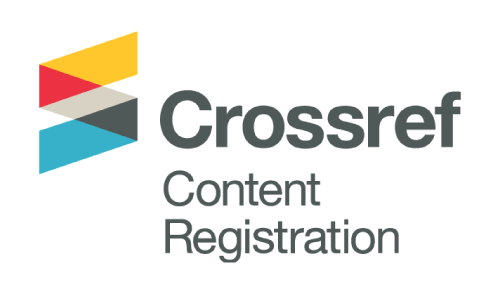Deep Learning Based Car Damage Classification and Cost Estimation
DOI:
https://doi.org/10.21271/ZJPAS.35.1.1Keywords:
Car Damage Detection, Mask RCNN, Deep Learning, Cost of the Damage, Machine LearningAbstract
Due to the increasing number of people driving cars, the number of insurance claims has also increased. This process involves the manual assessment of the vehicle by an insurance company's service engineer, as well as the physical inspection by a licensed insurance company representative. An end-to-end solution has been proposed that would allow the customer and the insurance company to automate the process of recognizing the damaged area in the vehicles and estimating the cost of the damage. It would allow them to get a better understanding of the condition of the vehicle. For this purpose, A deep learning, Mask Region-based Convolutional Neural Network (Mask RCNN) model was utilized in this work to classify vehicle damages costs. Two Mask RCNN models were utilized, the first one was used to detect the sides of the vehicle, which will affect damage cost estimation and the second was used to find the area of the damage. The Experimental work shows that the proposed model gives reasonable results to estimate the cost of the damage. We achieve an accuracy of 98.5% with the combination of the two Mask RCNN models. And showed that Mask RCNN has a promising result to detect the area of the damage in the car.
References
Artan, C.T. and Kaya, T., 2019, July. Car Damage Analysis for Insurance Market Using Convolutional Neural Networks. In International Conference on Intelligent and Fuzzy Systems (pp. 313-321). Springer, Cham.
Arun Mohan and Sumathi Poobal, 2018, “Crack detection using image processing: A critical review and analysis,” Alexandria Engineering Journal, vol. 57, no. 2, pp. 787– 798.
B. Y. Lecun Y., Bottou L. and H. P., 1998, “Gradient-based learning applied to document recognition,” Proceedings of IEEE, vol. 86, no. 11.
D. Erhan, Y. Bengio, A. Courville, P.-A. Manzagol, P. , 2010,Vincent, and S. Bengio, “Why does unsupervised pre-training help deep learning?” Journal of Machine Learning Research, vol. 11, no. Feb, pp. 625–660.
Dhieb, Najmeddine, Hakim Ghazzai, Hichem Besbes, and Yehia Massoud, 2019. "A very deep transfer learning model for vehicle damage detection and localization." In 2019 31st International Conference on Microelectronics (ICM), pp. 158-161. IEEE.
Gontscharov, S., Baumgärtel, H., Kneifel, A. and Krieger, K.L., 2014. Algorithm development for minor damage identification in vehicle bodies using adaptive sensor data processing. Procedia Technology, 15, pp.586-594.
Jason Yosinski, Jeff Clune, Yoshua Bengio, and Hod Lipson, 2014, “How transferable are featured in deep neural Fig. 9. False Positive Results by Damage MRCNN networks?” in Advances in neural information processing systems, pp. 3320–3328.
J. Huang, V. Rathod, C. Sun, M. Zhu, A. Korattikara, A. Fathi, I. Fischer, Z. Wojna, Y. Song, S. Guadarrama, et al. ,2017, Speed/accuracy trade-offs for modern convolutional object detectors. In CVPR.2,3,4,6,7.
Joseph Redmon, Santosh Divvala, Ross Girshick, and Ali Farhadi, 2016, “You only look once: Unified, real-time object detection,” in Proceedings of the IEEE conference on computer vision and pattern recognition, pp. 779–788.
Kaiming He, Georgia Gkioxari, Piotr Dollar, and Ross ´ Girshick , 2017, “Mask r-CNN,” in Proceedings of the IEEE international conference on computer vision pp. 2961–2969.
Kalpesh Patil, Mandar Kulkarni, Anand Sriraman, and Shirish Karande. 2017, Deep learning-based car damage classification. In2017 16th IEEE International Conference on Machine Learning and Applications (ICMLA). IEEE, 50–54.
K. He, X. Zhang, S. Ren, and J. Sun, 2016, Deep residual learning for image recognition," in The IEEE Conference on Computer Vision and Pattern Recognition (CVPR), June.
K. Simonyan and A. Zisserman, 2014, Very deep convolutional networks for large-scale image recognition," CoRR, vol. abs/1409.1556.
Krizhevsky A., Sutskever I., and G. E. Hinton, 2012, “Imagenet classification with deep convolutional neural networks,” in Advances in Neural Information Processing Systems 25, F. Pereira, C. J. C. Burges, L. Bottou, and K. Q. Weinberger, Eds. Curran Associates, Inc. pp. 1097–1105.
Li, L., Ono, K. and Ngan, C.K., 2021, April. A Deep Learning and Transfer Learning Approach for Vehicle Damage Detection. In The International FLAIRS Conference Proceedings (Vol. 34), 2021.
Malik, H.S., Dwivedi, M., Omakar, S.N., Samal, S.R., Rathi, A., Monis, E.B., Khanna, B. and Tiwari, A., 2020. Deep Learning Based Car Damage Classification and Detection. EasyChair Preprint, (3008),2020.
M. G. M. R. G. Soumalya Sarkar, Kishore K. Reddy, 2016, “Deep learning for structural health monitoring: A damage characterization application,” in Annual Conference of the Prognostics and Health Management Society.
Pei Li, Bingyu Shen, and Weishan Dong, 2018, “An anti-fraud system for car insurance claim based on visual evidence,” arXiv preprint arXiv:1804.11207.
Redmon j. and Farhadi A., 2018, Yolov3: An incremental improvement", computer vision and pattern recognition, Cornell University.
Shu Liu, Lu Qi, Haifang Qin, Jianping Shi, and Jiaya Jia, 2018, “Path aggregation network for instance segmentation,” 2018 IEEE/CVF Conference on Computer Vision and Pattern Recognition, pp. 8759–8768.
Singh, R., Ayyar, M.P., Pavan, T.V.S., Gosain, S. and Shah, R.R., 2019, September. Automating car insurance claims using deep learning techniques. In 2019 IEEE Fifth International Conference on Multimedia Big Data (BigMM) (pp. 199-207). IEEE.
Soumalya Sarkar, Kishore K Reddy, Michael Giering, and Mark R Gurvich, , 2016, “Deep learning for structural health monitoring: A damage characterization application,” in Annual Conference of the Prognostics and Health Management Society.
Srimal Jayawardena, 2013, “Image-based automatic vehicle damage detection,”, Doctor of Philosophy at The Australian National University.
Young-Jin Cha, Wooram Choi, and Oral Buy¨ uk¨ ozt ¨ urk, 2017, “Deep learning-based crack damage detection using convolutional neural networks,” Comp.-Aided Civil and Infrastruct. Engineering, vol. 32, pp. 361–378.
https://www.statista.com/statistics/664729/total-number-of-vehicles-india/. Visited on 2022.
https://www.ey.com/publication/vwluassets/ey-does-your-firm-needa-claims-leakage-study/ey-does-your-firm-need-a-claims-leakagestudy.pdf.”, visited on 2022
https://www.irmi.com/articles/expert-commentary/controlling-claimsleakage-through-technology, visited on 2022
https://www.sightcall.com/insurance-visual-claims-fight-fraud-andreduce-costs/. Visited on 2022
http://www.tractable.io/. Visited on 2022
Downloads
Published
How to Cite
Issue
Section
License
Copyright (c) 2023 Namam A. Mohammed, Moayad Y. Potrus, Abbas M. Ali

This work is licensed under a Creative Commons Attribution 4.0 International License.












